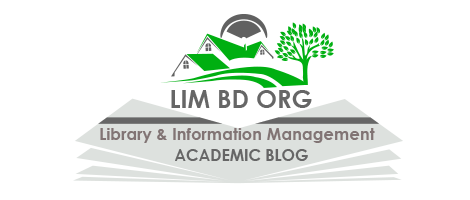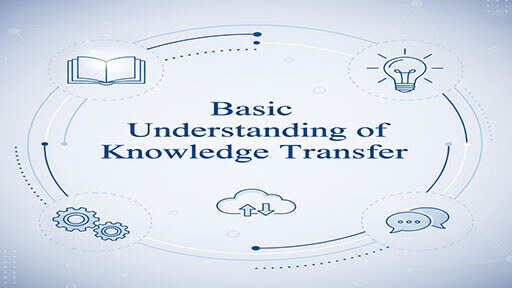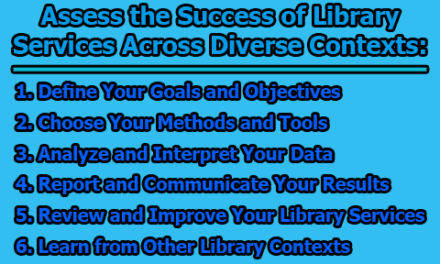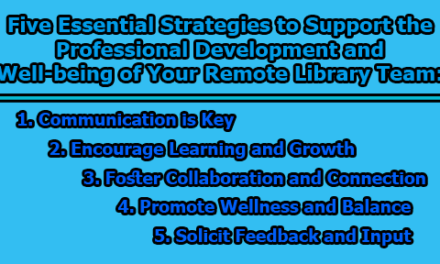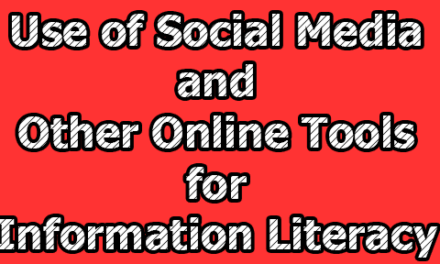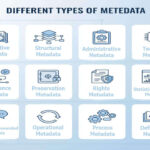Basic Understanding of Knowledge Transfer:
In today’s fast-paced and knowledge-driven world, the ability to capture, share, and apply expertise has become essential for organizations and individuals alike. Knowledge transfer is not just about exchanging information—it is about ensuring that valuable experiences, skills, and insights are preserved and effectively utilized to improve performance, innovation, and growth. Whether it occurs in the form of structured training, informal mentoring, collaborative research, or through digital platforms, knowledge transfer serves as the bridge between past experience and future progress. By enabling both explicit knowledge, such as reports and manuals, and tacit knowledge, such as problem-solving strategies and practical wisdom, to be shared across people and systems, organizations can strengthen continuity, adapt to change, and avoid the costly loss of intellectual capital. Ultimately, knowledge transfer is a cornerstone of learning cultures, where expertise is not only retained but also expanded upon to solve problems, enhance decision-making, and maintain a competitive edge. In the rest of this article, we will explore the basic understanding of knowledge transfer.
What is Knowledge Transfer?
Different scholars and practitioners define knowledge transfer in slightly different ways, depending on their focus.
From a management perspective, knowledge transfer is often described as the systematic sharing of information, skills, and expertise within an organization to improve efficiency and performance. For instance, Davenport and Prusak (1998) view it as the process by which knowledge moves from one part of an organization to another, ensuring that best practices and insights are reused rather than reinvented.
From a learning and education perspective, knowledge transfer is seen as the process of applying what has been learned in one context to another. Argote and Ingram (2000) suggest that it is not only about passing on information but also about enabling others to internalize and use it effectively in new situations, which is critical for continuous learning and innovation.
From a technological perspective, knowledge transfer is often linked to the tools and systems that make it possible. Alavi and Leidner (2001), for example, emphasize the role of information technology in facilitating knowledge storage, retrieval, and sharing, making expertise accessible across time and distance.
From a practical and experiential perspective, practitioners highlight the human side of knowledge transfer. They argue that while formal documents and databases are important, the real depth of knowledge often lies in tacit forms—insights, intuition, and problem-solving strategies—that can only be effectively shared through interaction, mentoring, and collaboration.
From the above definitions, we can say that knowledge transfer is a dynamic process that goes beyond simply sharing data. It encompasses both explicit and tacit knowledge, relies on human interaction as much as on technology, and plays a central role in organizational learning, innovation, and sustainability.
Importance of Knowledge Transfer in Organizational Settings:
In any organization, knowledge is one of the most valuable assets. Unlike physical resources that can be purchased or replaced, knowledge represents the collective experience, skills, and insights of employees. For this reason, knowledge transfer—the process of sharing and applying that knowledge across individuals and teams—plays an essential role in ensuring the long-term success and competitiveness of an organization.
- Preserving Institutional Memory: One of the biggest challenges organizations face is the loss of knowledge when experienced employees retire, resign, or move to different roles. Without effective knowledge transfer, years of expertise may leave with them, creating gaps in processes and decision-making. By establishing systems that capture both explicit (documented) and tacit (experiential) knowledge, organizations preserve their institutional memory. This ensures that valuable know-how remains accessible to new employees and future generations of workers.
- Enhancing Employee Learning and Development: Knowledge transfer directly contributes to professional growth by giving employees access to the experiences and insights of others. Mentorship programs, peer learning sessions, and collaborative projects allow newer staff to learn not only “what” to do but also “how” to approach complex problems. This continuous exchange of knowledge nurtures a learning culture, where employees feel empowered to develop their skills and share what they know with others.
- Driving Innovation and Creativity: Innovation often arises from the blending of diverse perspectives and ideas. When knowledge flows freely across departments and hierarchies, it sparks collaboration that can lead to new products, improved services, or more efficient processes. For example, when engineers share technical expertise with marketing teams, the organization may discover innovative ways to position products in the market. Knowledge transfer thus breaks down silos and creates opportunities for fresh thinking.
- Improving Efficiency and Productivity: A lack of knowledge sharing often leads to employees “reinventing the wheel,” wasting time solving problems that others have already resolved. Effective knowledge transfer reduces duplication of effort by making proven solutions, best practices, and lessons learned accessible across the organization. This not only speeds up workflows but also helps employees avoid past mistakes, leading to greater efficiency and consistency in performance.
- Supporting Change and Adaptation: In rapidly changing environments, whether due to new technologies, shifting markets, or organizational restructuring, knowledge transfer becomes essential for smooth transitions. Employees need access to updated practices, tools, and strategies to adapt successfully. For example, when a company adopts a new digital platform, knowledge transfer ensures that employees quickly learn how to use it effectively, minimizing disruption.
- Strengthening Decision-Making: Decision-making improves when leaders and employees have access to reliable, relevant, and comprehensive knowledge. Through knowledge transfer, decision-makers can draw on the collective wisdom of the organization, rather than relying solely on personal experience. This broadens perspectives, reduces risks, and helps align decisions with both short-term goals and long-term strategy.
- Maintaining Competitive Advantage: Finally, in today’s knowledge-driven economy, organizations that excel at knowledge transfer have a clear competitive edge. Competitors may replicate products or services, but replicating the accumulated expertise and problem-solving capabilities of an organization is far more difficult. By ensuring that knowledge is continuously captured, shared, and applied, organizations safeguard their intellectual capital and maintain their position in the market.
The importance of knowledge transfer in organizational settings cannot be overstated. It preserves critical expertise, develops talent, drives innovation, and enhances overall efficiency. More importantly, it fosters a culture of learning and collaboration, ensuring that knowledge is not hoarded but shared for the benefit of the entire organization. In a world where change is constant and competition is intense, knowledge transfer is not just a supportive practice—it is a strategic necessity for long-term sustainability and growth.
Key Methods and Strategies for Effective Knowledge Transfer:
In every organization, knowledge is a critical asset that ensures stability, growth, and innovation. However, knowledge is only valuable if it can be successfully passed from one individual or group to another. Effective knowledge transfer goes beyond simply communicating information—it ensures that knowledge is understood, retained, and applied in real-world contexts. This requires a combination of thoughtful methods and strategies that address both explicit knowledge, which can be easily documented, and tacit knowledge, which is more experiential and harder to capture. Here are some of the most widely used and effective methods organizations rely on to facilitate smooth and meaningful knowledge transfer.
- Mentoring and Coaching: Mentoring and coaching remain among the most effective approaches to transferring tacit knowledge. Unlike training sessions that provide general information, mentoring and coaching create a personalized, one-on-one environment where experienced employees guide less experienced colleagues. A mentor can adapt lessons to the learning style and pace of the mentee, ensuring that complex skills or problem-solving strategies are properly understood.
For example, a senior engineer mentoring a new hire can pass on more than just technical knowledge—such as design principles—but also the subtle problem-solving approaches and insights developed through years of practice. Because these relationships are interactive, mentees can ask questions, receive feedback, and apply new knowledge in real time. This makes mentoring and coaching particularly effective for passing down practical expertise and organizational culture.
- Formal Training and Workshops: Structured training programs and workshops are essential for transferring explicit knowledge. These are planned, organized sessions where employees are taught specific skills, procedures, or systems. Workshops often include presentations, case studies, and hands-on practice, which help participants not only learn but also apply knowledge immediately.
For instance, when a company introduces new software, a formal training session ensures that every employee is equipped to use it effectively. Workshops are especially valuable when the knowledge is standardized, such as safety protocols, compliance guidelines, or operating procedures. By creating a controlled learning environment, organizations can ensure consistency while also giving participants the chance to ask questions and clarify doubts.
- Knowledge Repositories and Documentation: Knowledge repositories serve as long-term storage spaces for valuable information. These systems—often in the form of intranets, databases, or digital libraries—allow employees to access manuals, best practices, policies, research, and reports whenever needed.
For example, a multinational company might maintain an online knowledge base where employees across the globe can find case studies, project documentation, and troubleshooting guides. Unlike informal discussions, repositories ensure that explicit knowledge is preserved and accessible beyond the presence of individual employees. They also reduce the risk of knowledge being lost when staff leave the organization.
- Job Rotation and Cross-Training: Job rotation and cross-training expose employees to different roles and functions within the organization. By stepping into new positions temporarily, employees develop a broader perspective on how the organization operates.
For example, a marketing specialist who spends time working with the sales team gains first-hand experience of customer interactions and market feedback. This additional knowledge not only enhances their own work but also strengthens collaboration between departments. Such strategies are invaluable for building a flexible workforce and preventing over-reliance on a single employee for specialized knowledge.
- Communities of Practice (CoPs): Communities of Practice are informal groups of employees who share common interests, challenges, or expertise. These groups meet regularly—formally or informally—to exchange experiences, brainstorm solutions, and stay updated on new developments in their field.
For instance, an IT department might have a CoP where employees come together to discuss emerging cybersecurity threats and share best practices. These peer-to-peer exchanges encourage continuous learning and ensure that valuable insights spread organically across the organization.
- Knowledge Sharing Platforms and Collaboration Tools: Technology has transformed the way organizations transfer knowledge. Digital tools such as Microsoft Teams, Slack, or internal wikis make it easy for employees to communicate, collaborate, and share resources in real time.
These platforms are particularly effective for geographically dispersed teams, as they bridge time zones and locations. Employees can upload documents, ask questions, and even hold brainstorming sessions online. In this way, both explicit knowledge (files, documents, guidelines) and tacit knowledge (ideas, experiences) can be exchanged quickly and efficiently.
- Storytelling and Best Practice Sharing: Storytelling is a uniquely human method of transferring knowledge, especially tacit insights. Through stories, employees can share experiences that include context, challenges, and emotions—elements that make lessons more memorable.
For example, a project manager might recount how they managed a difficult client relationship, highlighting the strategies they used to build trust and resolve conflicts. Such narratives not only transfer practical tips but also inspire listeners to approach challenges with new perspectives. Storytelling also helps preserve organizational culture by passing down values, traditions, and lessons learned.
- Exit Interviews and Knowledge Transfer Plans: Employee turnover is one of the biggest threats to organizational knowledge. Exit interviews and structured transfer plans help capture critical insights before employees leave.
For example, a departing project manager might document key timelines, stakeholder relationships, and best practices for ongoing projects. This allows incoming staff to transition smoothly without starting from scratch. Knowledge transfer plans can also be used during planned retirements or promotions, ensuring continuity in leadership and operations.
- Learning by Doing and Simulation: Finally, hands-on practice and simulations are powerful methods for transferring practical knowledge. These approaches immerse employees in realistic scenarios, allowing them to apply knowledge without the risks of real-world consequences.
In healthcare, for example, simulations are widely used to train staff on emergency procedures. Similarly, in aviation, flight simulators help pilots practice complex maneuvers safely. Such experiential learning ensures that employees not only know what to do but also gain the confidence to act effectively in high-pressure situations.
Effective knowledge transfer is not a one-size-fits-all process. It requires a combination of formal methods, such as training and documentation, and informal approaches, such as mentoring, storytelling, and communities of practice. The right mix depends on the type of knowledge being transferred, the people involved, and the organizational context. Ultimately, organizations that invest in structured yet flexible knowledge transfer strategies are better equipped to preserve expertise, empower employees, foster innovation, and maintain a lasting competitive advantage.
How Do Individuals and Organizations Ensure the Retention of Critical Knowledge during Transitions?
In any organization, transitions are inevitable. Employees retire, move to new roles, or leave for other opportunities. When this happens, organizations face the real risk of losing critical knowledge—both explicit (documented information) and tacit (experiential, hard-to-capture insights). If not managed carefully, this loss can disrupt workflows, reduce efficiency, and weaken long-term performance. To prevent such gaps, individuals and organizations need to take deliberate steps to retain and transfer knowledge effectively during these transition periods.
- Documenting Processes and Best Practices: One of the most straightforward strategies is creating comprehensive documentation. Employees should record procedures, guidelines, and lessons learned in an organized and accessible format. This includes step-by-step instructions, decision-making rationales, and frequently asked questions. For example, a software developer preparing to leave a team might create technical documentation that explains not only how a system works but also the logic behind certain design choices. This ensures that successors do not waste time trying to rediscover existing knowledge.
- Structured Knowledge Transfer Plans: A proactive approach involves creating formal knowledge transfer plans whenever a transition is expected. These plans outline what knowledge needs to be transferred, who will receive it, and the methods to be used (mentoring, shadowing, workshops, or documentation). For instance, when a project manager is about to move to another department, they might schedule regular handover sessions with their successor, covering project details, stakeholder relationships, and risk management strategies. Having a clear plan prevents critical information from being overlooked.
- Mentorship and Shadowing: Personal interaction is one of the most effective ways to pass on tacit knowledge that cannot be easily written down. Mentorship programs pair experienced employees with successors, allowing them to share insights, problem-solving approaches, and cultural nuances. Similarly, job shadowing enables incoming employees to observe how tasks are handled in real situations. For example, in healthcare, a nurse transitioning into a leadership role may shadow a senior nurse manager to learn both formal responsibilities and subtle interpersonal strategies for managing staff.
- Exit Interviews and Debriefing Sessions: Exit interviews are often used for collecting feedback, but they can also be structured to capture knowledge. By asking departing employees about challenges faced, solutions developed, and advice for successors, organizations can record valuable insights. Debriefing sessions with teams also ensure that knowledge is shared openly before the transition is complete. For example, in research organizations, a departing scientist might present their work to colleagues, explaining methodologies, obstacles, and recommendations for future studies.
- Building Knowledge Repositories: Knowledge repositories act as centralized systems where critical information can be stored and accessed. These may include databases, intranet platforms, or cloud-based tools containing manuals, reports, case studies, and training materials. Having a well-maintained repository ensures that even after an employee leaves, their knowledge remains available for others. For instance, a global consulting firm might store client case files, project lessons, and industry insights in an internal database that new consultants can reference at any time.
- Encouraging a Knowledge-Sharing Culture: Retaining knowledge during transitions is easier in organizations where knowledge sharing is part of the culture. If employees are encouraged to openly exchange ideas, write down lessons learned, and support each other, then knowledge is not concentrated in the hands of a few individuals. Regular team meetings, peer learning sessions, and communities of practice (CoPs) foster a collaborative environment where knowledge circulates continuously. This reduces dependency on any single employee.
- Leveraging Technology and Collaboration Tools: Digital tools make it easier to capture, organize, and share knowledge in real time. Platforms such as Slack, Microsoft Teams, or internal wikis allow employees to contribute information, collaborate on projects, and maintain ongoing records of decisions. Recording meetings, maintaining shared project boards, and storing files in collaborative spaces ensures that knowledge is not lost when team members move on. For instance, in remote or global organizations, these tools bridge gaps across locations and time zones, keeping knowledge accessible.
- Simulation and Practice-Based Learning: In certain industries, especially healthcare, aviation, or engineering, simulations and practice-based learning are valuable for ensuring successors are prepared for complex tasks. By creating real-life scenarios in controlled environments, employees can learn by doing while guided by experienced staff. For example, an outgoing emergency response manager might run simulation exercises with the incoming team, ensuring they gain hands-on experience in handling critical situations.
- Succession Planning: Organizations that plan for transitions in advance are better prepared to retain knowledge. Succession planning identifies future leaders and critical roles early, then provides training, mentoring, and exposure so that successors are ready when the time comes. Instead of scrambling when an employee resigns, the organization already has trained individuals capable of stepping into key positions with minimal disruption.
Knowledge loss during transitions is one of the biggest risks organizations face, but it is also one of the most preventable. By documenting processes, creating structured handover plans, fostering mentorship, maintaining repositories, and promoting a culture of collaboration, both individuals and organizations can ensure that critical knowledge is retained and effectively applied. Transitions will always be a part of organizational life, but with deliberate strategies, they can be managed smoothly—turning potential disruptions into opportunities for growth and renewal.
Challenges in Knowledge Transfer and How They Can Be Overcome:
Knowledge transfer is one of the most important processes in organizations, yet it is also one of the most complex. While transferring information such as manuals, reports, or data is relatively straightforward, passing along deeper insights, experiences, and problem-solving skills is much more difficult. Organizations often struggle to make sure that valuable expertise is not only communicated but also understood and applied. Below are some of the most common challenges in knowledge transfer, along with strategies to overcome them.
- Difficulty in Capturing Tacit Knowledge:
The Challenge: Tacit knowledge—the kind that comes from personal experience, intuition, and problem-solving—is hard to document or express clearly. For example, a senior engineer may know how to “feel” when a machine is about to fail, but putting that sense into words is difficult. As a result, much of this knowledge is at risk of being lost when experienced employees leave.
The Solution: Organizations can overcome this by encouraging mentoring, job shadowing, and storytelling, where employees learn through observation and direct interaction. Pairing new staff with experienced mentors ensures that subtle, experience-based knowledge is absorbed over time.
- Lack of Motivation to Share Knowledge:
The Challenge: Employees may hesitate to share their knowledge for fear of losing their competitive edge or because they don’t see personal benefits. Some may even view knowledge as a form of job security, making them reluctant to pass it on.
The Solution: To address this, organizations should build a culture that rewards collaboration rather than hoarding. Recognition programs, incentives, or performance evaluations tied to knowledge-sharing activities can encourage employees to share freely. Most importantly, leaders should model this behavior to demonstrate its value.
- Communication Barriers:
The Challenge: Differences in language, professional jargon, or cultural background can make knowledge transfer less effective. For example, highly technical explanations may not be easily understood by non-specialists in another department.
The Solution: Simplifying language, using visuals, and adopting clear communication strategies help bridge these gaps. Cross-functional training sessions and collaborative workshops can also ensure that knowledge is accessible to a wider audience.
- Overdependence on Technology:
The Challenge: While digital tools make storing and sharing knowledge easier, relying solely on technology can create problems. Databases and repositories often become “information dumps” that are difficult to navigate, and employees may feel overwhelmed or not use them at all.
The Solution: Technology should support—not replace—human interaction. Knowledge repositories must be well-organized, searchable, and user-friendly. Additionally, pairing digital platforms with human-centered approaches such as mentoring, peer learning, and communities of practice ensures knowledge is both accessible and meaningful.
- Time Constraints and Workload Pressures:
The Challenge: Employees are often too busy with day-to-day responsibilities to focus on transferring knowledge. As a result, knowledge-sharing activities may be pushed aside until it is too late.
The Solution: Organizations can integrate knowledge transfer into regular workflows rather than treating it as an “extra” task. Short, structured sessions such as weekly knowledge-sharing meetings or quick handovers embedded in daily routines make the process more manageable.
- Resistance to Change:
The Challenge: Some employees may resist new methods of knowledge transfer, whether it’s adopting new tools, participating in mentoring programs, or changing established workflows. This resistance slows down the process and reduces its effectiveness.
The Solution: To overcome resistance, organizations should clearly communicate the benefits of knowledge transfer and involve employees in designing the process. Training sessions and change management strategies can ease the transition, while leadership support ensures employees see knowledge transfer as a priority rather than an optional activity.
- Knowledge Loss During Employee Turnover:
The Challenge: When experienced employees retire or resign without passing on their expertise, organizations can lose years of valuable insight. This is particularly problematic in industries with high turnover or where critical roles require specialized expertise.
The Solution: Proactive succession planning, exit interviews, and structured handover processes are essential. Capturing insights through interviews, documentation, and mentoring well before an employee leaves ensures that knowledge is not lost suddenly.
Knowledge transfer is vital for organizational continuity, learning, and innovation, but it comes with real challenges. Tacit knowledge is difficult to capture, employees may lack motivation to share, and barriers such as poor communication, time constraints, or turnover can hinder the process. However, these challenges are not insurmountable. By promoting a culture of collaboration, combining technology with human interaction, integrating knowledge-sharing into everyday work, and planning for transitions in advance, organizations can ensure that valuable knowledge is retained and effectively used. In doing so, they not only safeguard institutional memory but also create an environment where innovation and growth can thrive.
Measuring and Evaluating Knowledge Transfer Within an Organization:
Knowledge transfer is obligatory for sustaining organizational performance, but simply putting processes in place is not enough. To truly benefit, organizations need to measure and evaluate how effectively knowledge is being shared, understood, and applied. Without proper evaluation, it is difficult to know whether mentoring programs, training sessions, or digital platforms are actually improving skills, preserving institutional memory, or driving innovation. Measuring knowledge transfer requires a mix of qualitative and quantitative approaches that assess both the process and its outcomes.
- Assessing Participation and Engagement: The first step in evaluation is to track how actively employees are engaging in knowledge transfer activities. Are staff attending workshops, using collaboration tools, or participating in communities of practice? High participation levels often indicate that employees find these initiatives valuable. For instance, monitoring the number of contributions to a company knowledge repository or the frequency of peer-to-peer mentoring sessions can provide insight into the level of engagement.
- Measuring Knowledge Retention and Understanding: It is not enough to share knowledge; employees must also retain and understand it. This can be measured through follow-up assessments, quizzes, or practical tests after training sessions. For example, if employees are trained on new software, periodic skill assessments can confirm whether they have mastered the system. In more informal settings, managers can observe how well employees apply newly acquired skills in real tasks, such as handling customer inquiries or operating machinery.
- Evaluating Application of Knowledge in Practice: The true test of knowledge transfer lies in how effectively employees apply what they have learned. This can be evaluated by analyzing changes in work performance, productivity, and problem-solving capacity. For instance, if employees receive training in lean manufacturing methods, improvements in efficiency, reduction in waste, or faster production times would indicate successful application. Regular feedback sessions, performance reviews, and project evaluations can help organizations measure this dimension.
- Monitoring Organizational Performance Outcomes: On a larger scale, organizations can measure how knowledge transfer impacts overall performance. This may include tracking innovation rates, customer satisfaction, quality improvements, or reduced error rates. For example, a healthcare organization that invests in sharing best practices across hospitals might monitor whether patient outcomes improve or medical errors decrease. When organizational performance indicators show positive trends, it suggests that knowledge transfer efforts are delivering value.
- Collecting Employee Feedback: Employees themselves are often the best source of information about whether knowledge transfer methods are working. Surveys, interviews, and focus groups can capture employee perceptions about the usefulness, accessibility, and clarity of shared knowledge. For example, staff may indicate whether training programs prepared them adequately for their roles or whether knowledge repositories are easy to navigate. This feedback provides valuable insights into areas where knowledge transfer strategies need improvement.
- Tracking Knowledge Sharing Behaviors: Organizations can also monitor behaviors that reflect a culture of knowledge sharing. This includes observing how often employees collaborate across teams, contribute ideas, or seek advice from colleagues. Metrics such as the number of documents uploaded to a knowledge management system, or the frequency of cross-departmental meetings, can give a clear picture of how knowledge flows within the organization.
- Benchmarking and Continuous Improvement: Measuring knowledge transfer should not be a one-time activity. Organizations should establish benchmarks and regularly compare performance against them. For example, if a company sets a goal that 80% of employees should complete a particular training program within six months, progress can be measured against this benchmark. Continuous monitoring allows organizations to refine their methods, ensuring that knowledge transfer becomes more effective over time.
- Using Technology Analytics: Modern knowledge management systems and collaboration tools often come with built-in analytics. These can provide real-time data on usage patterns, such as how many employees access a resource, how often documents are downloaded, or which discussion threads generate the most activity. By leveraging analytics, organizations can identify which resources are most valuable and where gaps exist.
Measuring and evaluating knowledge transfer is not just about checking whether information has been shared—it is about ensuring that knowledge has been retained, understood, and applied in ways that improve individual and organizational performance. Effective evaluation combines participation tracking, retention assessments, behavioral monitoring, and performance outcomes with feedback from employees. By continuously measuring and refining their approaches, organizations can transform knowledge transfer from a routine activity into a powerful driver of innovation, efficiency, and competitive advantage.
How Organizational Culture Impacts the Success of Knowledge Transfer Initiatives:
Knowledge transfer is not only about tools, training, or repositories—it is also about people. At the heart of any successful knowledge transfer initiative lies the organizational culture. Culture shapes how employees view knowledge: whether they see it as something to be hoarded for personal advantage or shared for the collective good. It influences motivation, trust, openness, and collaboration—all of which determine whether knowledge flows freely or gets stuck in silos. When organizations invest in creating a supportive culture, knowledge transfer becomes natural and sustainable. Conversely, when the culture is competitive, rigid, or closed, even the best-designed systems and processes fail. Here are the key ways organizational culture impacts the success of knowledge transfer.
- Attitudes Toward Knowledge Sharing: In some organizations, employees treat knowledge as power and may hesitate to share it, fearing it will reduce their value or job security. In others, knowledge is seen as a collective asset that strengthens the whole team. Culture sets this tone.
For instance, a culture that rewards individual achievements over teamwork may discourage employees from sharing what they know. On the other hand, cultures that celebrate collaboration—such as through team-based rewards or recognition—create an environment where employees feel motivated to contribute to others’ learning.
- Trust and Openness: Knowledge transfer requires a high level of trust. Employees must feel comfortable sharing not only their successes but also their failures and lessons learned. If the culture is judgmental or punishes mistakes, people are less likely to speak openly.
A trusting culture encourages employees to admit challenges and share problem-solving strategies, knowing they will not be criticized. For example, in learning organizations such as Toyota, employees are encouraged to openly discuss process errors so that the team can collectively find improvements. This openness directly enhances the flow of knowledge.
- Leadership Support and Role Modeling: Leaders play a critical role in shaping culture. When leaders actively share their knowledge, participate in mentoring, and encourage collaboration, employees are more likely to follow suit. Conversely, if leaders withhold information or discourage transparency, employees will mirror that behavior.
For example, when executives regularly participate in knowledge-sharing sessions, storytelling events, or cross-departmental meetings, they send a clear message: sharing knowledge is valued and expected. Leadership support not only sets the standard but also provides the resources and recognition necessary for knowledge transfer initiatives to thrive.
- Incentives and Recognition Systems: Culture influences whether employees see knowledge sharing as an extra burden or as part of their professional identity. If performance evaluations and reward systems focus solely on individual outputs, employees may feel little motivation to invest time in mentoring others or documenting processes.
A culture that ties recognition and career growth to collaborative behaviors ensures employees understand that knowledge sharing is not optional. For instance, organizations that highlight “knowledge champions” or reward teams for innovation foster a sense of pride and accountability in passing knowledge forward.
- Communication Norms and Collaboration Practices: How people communicate within an organization reflects its culture. In some workplaces, communication is open and transparent, with information flowing freely across departments. In others, communication is hierarchical, with knowledge locked within certain levels or silos.
Organizations with a collaborative culture promote cross-functional meetings, communities of practice, and informal spaces for dialogue. These opportunities make it easier for employees to exchange both explicit knowledge (e.g., documented processes) and tacit knowledge (e.g., personal experiences).
- Adaptability and Learning Orientation: A rigid culture that resists change can limit the effectiveness of knowledge transfer initiatives. If employees are unwilling to try new tools, methods, or processes, knowledge remains stagnant. In contrast, cultures that value continuous learning and adaptability are more likely to embrace innovative ways of transferring knowledge.
For example, companies that cultivate a “learning organization” mindset encourage employees to experiment, share lessons from failures, and adapt quickly. This orientation not only improves knowledge transfer but also builds resilience in times of transition or disruption.
- Integration of Technology into Daily Work: Even with advanced digital platforms, culture determines how often and how effectively these tools are used. If employees perceive knowledge-sharing platforms as an “extra task” rather than a natural part of their workflow, adoption rates remain low. A supportive culture integrates technology seamlessly into daily routines and encourages employees to see these platforms as essential collaboration spaces.
Organizational culture acts as the invisible force that either accelerates or hinders knowledge transfer initiatives. A culture of trust, openness, collaboration, and learning empowers employees to share knowledge willingly and effectively. Leadership behavior, recognition systems, communication norms, and adaptability all play a vital role in shaping this environment.
Eventually, no amount of technology or training can compensate for a culture that discourages knowledge sharing. For knowledge transfer initiatives to succeed, organizations must cultivate a culture where knowledge is not just stored but actively exchanged, valued, and applied. By doing so, they ensure that expertise becomes a shared resource—driving innovation, resilience, and long-term success.
The Role of Leadership in Fostering Successful Knowledge Transfer Within an Organization:
Knowledge transfer does not happen automatically—it requires intentional effort, supportive systems, and, most importantly, strong leadership. Leaders play a central role in shaping how knowledge is created, shared, and applied within organizations. They set the tone for collaboration, allocate resources, and model the behaviors that encourage employees to engage in knowledge-sharing activities. Without leadership commitment, even the most advanced knowledge management tools or well-designed training programs often fail to achieve their potential. Below are the key ways leadership fosters successful knowledge transfer within an organization.
- Setting the Vision and Strategy: Leaders are responsible for articulating why knowledge transfer matters and how it aligns with the organization’s goals. When knowledge transfer is positioned as a strategic priority—rather than an optional activity—employees recognize its importance. For instance, a CEO who emphasizes knowledge-sharing as part of the organization’s innovation strategy sends a strong signal that it is a core element of success, not just an administrative task.
- Modeling Knowledge-Sharing Behaviors: Employees often follow the example set by their leaders. If leaders openly share their own experiences, lessons learned, and insights, employees are more likely to do the same. Conversely, if leaders withhold information or operate in silos, employees will adopt similar behaviors.
For example, a department head who regularly holds storytelling sessions to share successes and failures demonstrates that transparency and openness are valued. By modeling these behaviors, leaders create a culture where sharing knowledge becomes the norm.
- Creating a Culture of Trust and Openness: Trust is at the foundation of effective knowledge transfer. Employees need to feel safe to share not only what worked but also what went wrong. Leaders build this trust by encouraging open communication, treating mistakes as learning opportunities, and recognizing employees for contributing knowledge rather than punishing them for errors.
A leader who responds to employee mistakes with curiosity and support instead of blame fosters a psychologically safe environment. In such an environment, employees are more likely to share critical insights that might otherwise remain hidden.
- Providing Resources and Infrastructure: Knowledge transfer requires both time and tools. Leaders play a key role in allocating resources—whether it’s budgeting for knowledge management systems, providing platforms for collaboration, or allowing time for mentoring and training.
For example, a manager who adjusts workloads so employees can participate in cross-training sessions demonstrates that knowledge-sharing is a priority. Without leadership support in resourcing, knowledge transfer initiatives often remain underutilized or unsustainable.
- Encouraging Cross-Functional Collaboration: Knowledge often gets trapped within departments or teams, creating silos that limit organizational learning. Leaders can break down these barriers by encouraging cross-functional projects, establishing communities of practice, and creating opportunities for employees from different areas to collaborate.
A leader who rotates staff across departments or organizes interdepartmental workshops helps spread diverse perspectives and ensures that knowledge flows across the organization, not just within isolated units.
- Recognizing and Rewarding Knowledge Sharing: Leadership must make knowledge-sharing behaviors visible and valued. Recognizing employees who contribute to knowledge repositories, mentor colleagues, or lead training sessions reinforces the idea that these efforts are meaningful.
Rewards don’t always have to be financial—public recognition, career advancement opportunities, or even simple acknowledgments in team meetings can motivate employees to engage. When leaders link performance evaluations and career growth to collaboration and knowledge-sharing, employees see these behaviors as integral to success.
- Supporting Continuous Learning and Development: Leaders who prioritize lifelong learning foster an environment where employees constantly acquire and share new knowledge. By investing in professional development opportunities such as training, workshops, or learning platforms, leaders encourage employees to not only learn but also pass on their insights to others.
For instance, a leader who sponsors employees to attend industry conferences but requires them to present their learnings to the team ensures that knowledge flows beyond the individual to the wider organization.
- Managing Change and Overcoming Resistance: Introducing knowledge transfer initiatives often requires changes in habits, processes, or technology. Employees may resist these changes if they do not see immediate benefits or if they fear losing control of their expertise. Leaders play a vital role in managing this resistance by clearly communicating the value of knowledge transfer, involving employees in decision-making, and providing training to ease transitions.
Strong leadership during change ensures that knowledge-sharing initiatives are accepted and sustained over time.
Consequently, leadership is the cornerstone of successful knowledge transfer. By setting a clear vision, modeling collaborative behaviors, building trust, and providing the necessary resources, leaders create an environment where knowledge flows freely and effectively. They also play a crucial role in breaking down silos, recognizing contributions, and fostering continuous learning.
Subsequently, leaders determine whether knowledge transfer becomes an organizational strength or a missed opportunity. When leadership actively supports and champions these efforts, knowledge transfer transforms from a simple exchange of information into a powerful driver of innovation, resilience, and long-term organizational success.
How Knowledge Transfer Contributes to Competitive Advantage in Businesses and Academic Institutions:
Knowledge transfer—the process of moving skills, insights, and expertise from one individual, team, or organization to another—plays a central role in creating a competitive advantage. Whether in business or academic institutions, organizations that excel in knowledge transfer are better equipped to innovate, adapt, and maintain long-term success.
- Preserving and Leveraging Intellectual Capital: Intellectual capital—the collective knowledge, skills, and experience within an organization—is one of the most valuable assets. Knowledge transfer ensures that this capital is preserved and utilized efficiently. In businesses, this might mean documenting best practices, mentoring new employees, or using collaborative platforms to share insights. For example, a consulting firm that codifies successful project methodologies enables new consultants to apply proven strategies, reducing errors and improving client outcomes.
In academic institutions, knowledge transfer occurs when senior researchers mentor junior faculty, share experimental techniques, or collaborate across departments. This preserves critical research knowledge and ensures that innovations are built upon, rather than reinvented. By retaining and leveraging intellectual capital, organizations can maintain continuity and avoid losses due to staff turnover or retirement.
- Driving Innovation and Creativity: Innovation is often the result of combining diverse perspectives and experiences. Effective knowledge transfer fosters an environment where ideas flow freely, creating opportunities for creative problem-solving.
In businesses, cross-departmental knowledge transfer allows marketing, product development, and engineering teams to collaborate, generating innovative solutions. For instance, Apple’s design and engineering teams are known for intensive collaboration, where tacit knowledge about consumer preferences and technical constraints drives breakthrough products.
In academia, interdisciplinary collaboration between departments or research groups can lead to novel discoveries and publications. For example, combining expertise in neuroscience and computer science has led to advancements in artificial intelligence and brain-computer interfaces. Organizations that transfer knowledge effectively are better positioned to innovate faster than their competitors.
- Enhancing Decision-Making and Problem-Solving: Knowledge transfer enables decision-makers to access a broad base of information and experience, leading to better decisions. In businesses, this can mean using lessons learned from past projects to avoid repeating mistakes or leveraging insights from customer feedback to refine products.
Academic institutions benefit when faculty and researchers share findings, methodologies, and experimental results. For example, a university that encourages sharing research data among laboratories ensures that faculty can build on each other’s work, avoid duplication, and pursue more effective solutions to complex problems.
By improving decision-making and problem-solving capabilities, organizations become more agile and responsive to change—a clear competitive advantage in fast-moving environments.
- Increasing Operational Efficiency: Knowledge transfer reduces redundancy and ensures that best practices are disseminated across the organization. Employees do not need to “reinvent the wheel” for each task or project.
In businesses, this could involve using standardized procedures, documented workflows, or internal training programs. For example, Toyota’s lean manufacturing principles rely heavily on transferring knowledge about efficiency and quality control throughout the company.
In academia, knowledge transfer might involve sharing standardized research protocols, laboratory techniques, or administrative practices, allowing resources to be used more effectively. Efficient knowledge transfer streamlines operations, lowers costs, and improves outcomes, giving the organization a competitive edge.
- Building a Learning Organization: Organizations that prioritize knowledge transfer cultivate a culture of continuous learning. Employees or faculty members are encouraged to acquire new skills, share insights, and learn from both successes and failures.
In businesses, this learning culture enhances employee capabilities, drives innovation, and increases retention, as staff feel valued and engaged. In academic institutions, it fosters mentorship, collaborative research, and interdisciplinary growth, enhancing the institution’s reputation and output. A learning organization can adapt quickly to changes in the market or academic landscape, maintaining a competitive advantage over less agile peers.
- Facilitating Collaboration and Networking: Knowledge transfer often breaks down silos and encourages collaboration across departments, campuses, or even organizations. Strong internal and external networks allow organizations to pool expertise and resources.
For example, multinational corporations that encourage collaboration between global offices can innovate faster and respond to international market trends more effectively. In academia, inter-university collaborations, joint research projects, and shared publications expand intellectual influence and visibility, strengthening the institution’s competitive position.
- Protecting Against Knowledge Loss: Employee turnover or retirement poses a significant risk to organizational knowledge. Effective knowledge transfer ensures that expertise is retained and passed on to successors.
In businesses, this might involve succession planning, exit interviews, or mentoring programs. Academic institutions rely on mentoring junior faculty, documenting research methods, and maintaining digital repositories of publications and data. By retaining critical knowledge, organizations reduce disruptions, maintain continuity, and sustain performance, contributing to long-term competitiveness.
Knowledge transfer is a strategic tool that directly contributes to competitive advantage in both businesses and academic institutions. By preserving intellectual capital, fostering innovation, enhancing decision-making, improving operational efficiency, and building a learning culture, organizations can outperform competitors and achieve sustained success. In today’s knowledge-driven economy, the ability to effectively transfer knowledge is not just a supportive practice—it is a defining factor that determines whether an organization thrives or falls behind.
In conclusion, knowledge transfer is far more than the simple act of sharing information—it is the deliberate process of ensuring that skills, expertise, and insights move from one person, team, or generation to another in meaningful ways. It bridges the gap between individual know-how and organizational learning, turning personal experiences into collective assets. Whether through mentoring, training, collaboration, or digital systems, knowledge transfer strengthens continuity, innovation, and growth. By understanding its foundations, we see that effective knowledge transfer is not just a support function but a strategic necessity for any business, academic institution, or community seeking long-term success.
Frequently Asked Questions (FAQs):
What is the difference between tacit and explicit knowledge in knowledge transfer?
Tacit knowledge is personal, experience-based, and harder to document (e.g., intuition, problem-solving methods). Explicit knowledge is formal, structured, and easily recorded (e.g., manuals, databases). Both are essential, but tacit knowledge often requires mentoring or hands-on training to transfer.
Can knowledge transfer happen informally?
Yes, while many organizations set up formal systems, informal knowledge transfer happens daily through conversations, teamwork, and storytelling. Often, these informal exchanges carry rich insights that structured processes may miss.
How does knowledge transfer support innovation?
When knowledge is shared across teams or disciplines, it combines different perspectives. This cross-pollination of ideas often sparks creative solutions and breakthroughs in products, services, or research.
What happens if organizations ignore knowledge transfer?
They risk losing critical expertise when employees leave, duplicating mistakes, slowing down decision-making, and falling behind competitors who better manage their knowledge.
What role does organizational culture play in knowledge transfer?
A culture of trust, openness, and collaboration encourages people to share freely. In contrast, cultures driven by fear, competition, or secrecy discourage sharing and weaken knowledge transfer efforts.
How does mentoring contribute to knowledge transfer?
Mentoring allows experienced employees or faculty to share tacit knowledge with newcomers. It is one of the most effective ways to pass on practical skills, problem-solving strategies, and institutional wisdom.
Can knowledge transfer improve employee retention?
Yes, when employees feel they are both learning from others and contributing to the organization’s knowledge, they feel more valued and engaged, which reduces turnover.
How is knowledge transfer different in businesses versus academic institutions?
In businesses, it often focuses on efficiency, innovation, and competitive advantage. In academic institutions, it emphasizes research continuity, teaching improvement, mentorship, and expanding intellectual contributions to society.
What tools or methods are commonly used for knowledge transfer?
Examples include knowledge repositories, intranets, training sessions, job shadowing, collaborative platforms (like Microsoft Teams or Slack), storytelling, exit interviews, and cross-functional workshops.
What is the future of knowledge transfer?
With the rise of artificial intelligence, big data, and digital collaboration tools, knowledge transfer will increasingly rely on smart systems that capture, analyze, and distribute knowledge quickly. However, human elements—trust, mentoring, and culture—will remain equally important.
References:
- Argote, L. and Ingram, P. (2000). Knowledge Transfer: A Basis for Competitive Advantage in Firms. Organizational Behavior and Human Decision Processes, 82, 150-169.
- Alavi, M. and Leidner, D.E. (2001) Knowledge Management and Knowledge Management Systems: Conceptual Foundations and Research Issues. MIS Quarterly, 25, 107-136. http://dx.doi.org/10.2307/3250961
- Davenport, T.H. and Prusak, L. (1998). Working Knowledge: How Organizations Manage What They Know. Harvard Business School Press, Boston.

Library Lecturer at Nurul Amin Degree College
